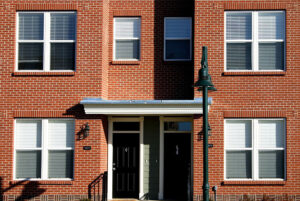Editorial
The housing dilemma has reached a critical juncture nationwide, with Ontario encountering particularly acute hurdles as average home prices have surged twofold in under a decade. Governments at various levels are scrambling for solutions and vying for acknowledgment of their endeavors.

Ontario Premier Doug Ford’s administration, upon winning a majority, vowed to confront the issue by erecting 1.5 million homes by 2031. They laid out an annual housing supply action plan to tackle the crisis head-on. Housing Minister Paul Calandra has hinted at an imminent housing bill, sparking anticipation among proponents.
On the federal stage, the Liberal government, navigating within a minority, faces flak from the opposition Conservatives for exacerbating housing unaffordability. In response, they have placed emphasis on the Housing Accelerator Fund, spearheaded by Minister Sean Fraser, which incentivizes municipalities to loosen zoning laws in return for federal funding.
Amid these initiatives, the central question looms: Who is making tangible strides in mitigating the housing crisis?
Traditionally, Ontario’s housing scene has been dominated by single-family homes, with scant availability of more affordable options like apartments. Inadequate adaptation of planning policies to population growth resulted in a severe supply-demand imbalance, propelling prices to staggering heights and intensifying rental market strains.
Recognizing the urgency, the Ford government initiated expert consultations and received recommendations highlighting the need to facilitate multiplex developments without convoluted rezoning procedures. While some measures, such as legalizing triplexes, have been enacted, the crucial step of legalizing multiplexes remains pending.
Minister Sean Fraser championed the Housing Accelerator Fund, a $4 billion initiative aimed at expediting housing development by incentivizing municipalities to embrace densification and streamline approval processes. Through extensive consultations with mayors across Ontario, Fraser has secured significant funding commitments, projected to yield nearly 370,000 homes over a decade.
While hailed by many housing advocates, some criticize the program’s constraints, attributing them to federal jurisdiction limitations. Nonetheless, Fraser’s proactive stance has propelled the housing discourse forward and facilitated progress, albeit confined within existing regulations.
Despite the fund’s achievements, hurdles persist in translating funding into tangible outcomes. Municipalities wield considerable autonomy in zoning decisions, often erecting barriers that impede the feasibility of multiplex developments. Challenges such as parking requirements and development envelope restrictions pose significant obstacles to effective implementation.
Addressing these challenges necessitates proactive intervention at the provincial level. While the federal government can incentivize municipal action, setting overarching standards and regulations falls within the province’s jurisdiction. Models from provinces like British Columbia, which have instituted minimum zoning standards and eased regulatory burdens, offer valuable insights into effective policy frameworks.
The Ford government’s commitment to erecting 1.5 million homes aligns with the objectives of Fraser’s initiative. While the administration’s focus has predominantly been on high-density developments and outward sprawl, indications of policy shifts towards facilitating densification in single-family neighborhoods have surfaced.
Ontario’s housing crisis demands comprehensive, coordinated efforts from all levels of government. While federal initiatives like the Housing Accelerator Fund have spurred progress, sustained success hinges on provincial leadership in establishing regulatory standards and fostering an environment conducive to housing development. With proactive policies and collaborative approaches, Ontario can navigate its housing challenges and ensure equitable access to affordable housing for its residents.


